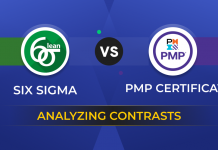
Project estimation can be more tedious than the actual project itself. The reason behind this is the large number of factors that have to be taken into consideration such as type of client, scope, resources involved, unknown variables and many more. These factors make it extremely difficult to accurately pinpoint the required time and effort to complete a project. Additionally, the biased nature of project managers leads to inaccurate estimates. Estimating is critical to a project’s success and by following a few proactive estimating techniques; we can drastically improve the accuracy of project estimation. Incorporating a robust project management methodology from the beginning has lot of advantages here.
Benefits of Using Project Estimating Techniques
- Apart from helping to manage risks, it plays an important role in anticipating project uncertainties.
- It can precisely identify schedule and cost requirements.
- It mitigates the risk of running out of resources, budget and time during the course of the project.
- It gives an accurate picture of how time and effort can be effectively distributed in a project.
Here are few tips to be followed by project managers’ to create accurate project estimation.
Accurate Project Estimation
-
Look for Records from Old Projects:
Time spent on each aspect of the ongoing project must be accurately recorded in a database. This data can then be used as a reference for estimating future projects and will give the exact idea of how long it will take to realistically perform the work. These records of old projects will also prepare the project team to face or prevent any impediments that they might face in the present project. The best practices must be incorporated in future estimates.
-
Air-tight Planning Process:
The planning process must include every scenario that the team might encounter during project execution. Everything from best case scenario, worst case scenario to the most likely scenario, all must be given their due importance and relevant resources must be assigned to them. For tasks which are relatively new for the team members and holds a considerable risk factor, the analysis must be done separately.
-
A Well Drafted Contingency Plan:
A contingency plan should always be drafted while coming up with the actual project plan. It might go untouched, however, that does not mean it should not be included just to make the project budget look less bloated. You never know when it might come in handy. The plan must even take into consideration the extra man hours, resources and cost. If it is never used, the additional funds can always be kept aside for future use.
-
Realistic Budget Numbers:
Project managers have the tendency to force their team to keep the numbers low while working on an estimate. While serving no purpose, this kind of estimate only looks good on paper. Moreover, the burden of justifying why such a low estimate was made, if ever the project runs into delays due to unknown factors, falls on the project manager’s shoulders. If ever such conflict arises with budget, provisions must be made to alter the scope.
-
Assumptions Clearly Communicated:
While creating project estimates it is extremely important that the project managers communicate their assumptions to their team to make sure they are on the same page. Even a small misunderstanding can prove costly later in the project.
-
Always Include Risks:
Risk assessment will not be fruitful if all members of a project team are not aware of the inherent risks that might creep into the project. The project estimate must include the perfect risk mitigation plan to prevent any untowardly constraint in the future phase of the project.
-
More than One Project Estimation Technique:
Using multiple project estimation techniques has its own benefits. Some techniques take into consideration a set of criteria which might be left out by others. This can cause setbacks if unforeseen circumstances arise during project implementation.
-
Simplicity is the Key:
Project estimation is an exercise to find the simplest and the most efficient way to carry out a given task. By following simple methods any project can be completed within the estimated time and budget.
-
Outsourcing is a Boon:
Many project managers try to complete a project using only the team that is available at hand. This increases fatigue among the team members and drastically reduces efficiency. Outside professionals can be hired to provide assistance with various tasks which requires profound knowledge base and a set of highly specialized skills.By tapping the potential of outsourcing, project managers can get the best out of their in-house personnel.
-
Precedence to Commonly Overlooked Activities:
Projects overlook supplementary activities all the time. These include fixing bugs, edits, client feedback and meetings which are not given the attention that they deserve even though they occur quite frequently throughout the project. Not considering them can have a negative impact on the estimation efforts.
-
Avoid High-Level Breakdowns:
Accurate estimates can be created with the help of detailed breakdowns. The details will also help in creating a better understanding of individual responsibilities among the team members. Detailed estimates might reveal inflated costs. However, it’s better to be aware of it when you still have control over the project scope rather than during the implementation stage.
Estimating may not sound exciting, yet it is highly necessary and can create wonders for a project when done right. By applying time tested estimating techniques to every aspect of a project you can mitigate risks, improve estimating practices and drastically increase the success rate of your project.














